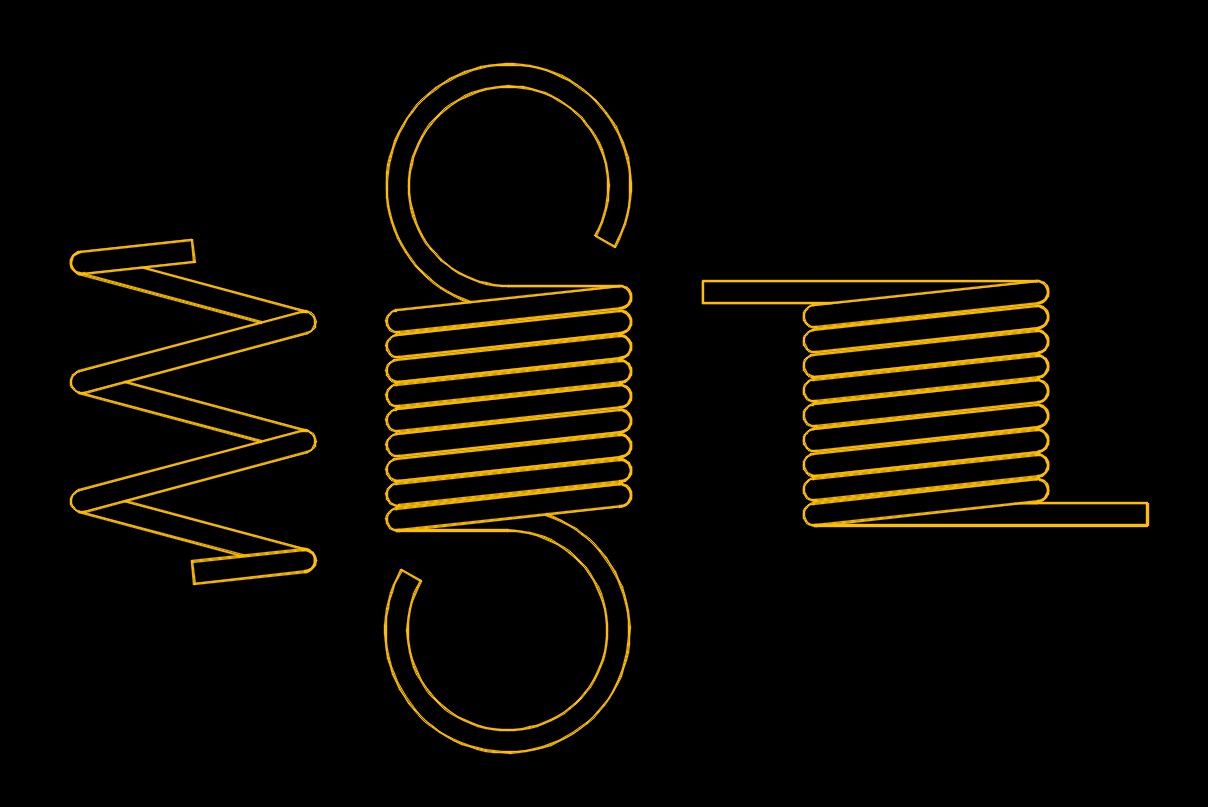Spring
 Springs are mechanical devices of flat wire or round wire that can store potential energy because of its elasticity in a spiral coil used to compress, extend, pull, or rotate using an applied force. It is a mechanical device or component that is designed to store and release mechanical energy when subjected to external forces or deformations. Springs are widely used in various applications to provide elasticity, flexibility, and resilience to mechanical systems.
Springs are mechanical devices of flat wire or round wire that can store potential energy because of its elasticity in a spiral coil used to compress, extend, pull, or rotate using an applied force. It is a mechanical device or component that is designed to store and release mechanical energy when subjected to external forces or deformations. Springs are widely used in various applications to provide elasticity, flexibility, and resilience to mechanical systems.
The primary function of a spring is to return to its original shape or position after being compressed, stretched, or twisted. This characteristic is commonly referred to as its springiness or resilience. Springs work based on Hooke's law, which states that the force required to deform an elastic object, like a spring, is directly proportional to the amount of deformation.
- See Articles - List of Tags / List of Categories / List of Articles / List of Glossaries / Nomenclature and Symbols / (See Spring Glossary)
Spring Types
- Coil Spring
- Helical Spring - These are the most common type of coil springs, made by winding a wire around a cylindrical form.
- Torsion Spring - Designed to resist twisting or torsional motion, torsion springs are typically wound in a helix or spiral shape.
- Extension Spring - These springs are designed to resist stretching or pulling forces. They usually have hooks or loops on each end for attachment.
- Compression Spring - These springs are designed to resist compressive forces or pushing. They are often used in applications where space is limited.
- Leaf Spring - Typically used in suspension systems for vehicles, leaf springs are made of layers of metal strips (leaves) stacked on top of each other.
- Flat Spring - These are made of flat strips of material and can be used for various applications, such as in electrical contacts or switches.
- Belleville Spring - Also called conical or disc springs, Belleville springs are conical shaped and are often used as washers to provide high spring force in a small space.
- Wave Spring - These springs have a wavy or corrugated shape and are used when a compact design is essential. They are often used in bearing preload and as alternatives to traditional coil springs.
- Gas Spring - Also called gas struts or gas shocks, these springs use compressed gas to provide a controlled and adjustable force.
- Constant Force Spring - These springs exert a nearly constant force throughout their deflection range. They are often used in applications such as retractable cords, window counterbalances, and tape measures.
- Composite Spring - These are made by combining different materials, such as metal and plastic, to achieve specific properties like corrosion resistance or weight reduction.
- Disc Spring - Also called Belleville washers, these are conical-shaped washers that can be stacked together to create a spring with varying force characteristics.
The choice of spring type depends on factors such as the application requirements, space constraints, load characteristics, and durability considerations. Each type of spring has its advantages and limitations, and selecting the right type is crucial for the proper functioning of the system in which it is used.

